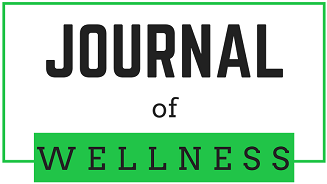
Funder
The authors received no specific funding for this work.
Conflict of Interest
The authors have no conflict of interest to declare for this work.
Abstract
Introduction: Burnout is well known as a prevalent hazard in emergency medicine (EM) careers, but the literature is less clear about what specific work-related factors actually contribute to wellness and burnout among academic EM faculty.
Objectives: 1) To explore themes and specific concerns that contribute to faculty wellness in an academic emergency department, in a qualitative fashion. 2) To determine whether these themes and concerns changed appreciably in the time of the COVID-19 pandemic.
Methods: EM faculty members at an academic institution were invited to participate in the study, including an on-line survey and a structured interview. Survey results were analyzed using descriptive statistics, interviews were coded and analyzed in qualitative fashion with frequency of themes as the primary outcome.
Results: 33 of 40 EM faculty members at one institution participated in interviews with the study team. Twenty-four returned Maslach Burnout Inventory (MBI) and Areas of Worklife surveys, with 5 of the 24 registering as burned out by standard definitions. In qualitative analysis of the interviews, the most common negative themes were psychological stress, balancing work and family life, negative perceptions of non-departmental administration and certain aspects of clinical work. The most common positive themes included positive views of departmental leadership, teamwork among colleagues, trainees and others, and self-worth derived from doing the work of EM. Themes before and during the COVID-19 pandemic were similar, with an increase in positive comments related to patient care during the COVID-era (p = 0.02).
Conclusion: Among one group of EM faculty, positive drivers of wellness were primarily relational in nature, including working in teams to care for patients and carry out the various missions of academic EM. Negative drivers were consistent with previous work in burnout among medical professionals, to include stress, tensions between work and family obligations, and conflicts in the care and work environments.
DOI
10.55504/2578-9333.1198
Recommended Citation
Hartman, Nicholas D.; Glass, Casey; Pariyadath, Manoj; Hosmer, Kathleen; Hunt, Meagan; Ashburn, Nicklaus; and Lefebvre, Cedric
(2024)
"Contributors to Faculty Wellness in an Academic Emergency Department Before and During the Pandemic: A Qualitative Study,"
Journal of Wellness: Vol. 5
:
Iss.
2
, Article 9.
DOI: https://doi.org/10.55504/2578-9333.1198
Available at:
https://ir.library.louisville.edu/jwellness/vol5/iss2/9
Included in
Emergency Medicine Commons, Medical Humanities Commons, Other Mental and Social Health Commons
